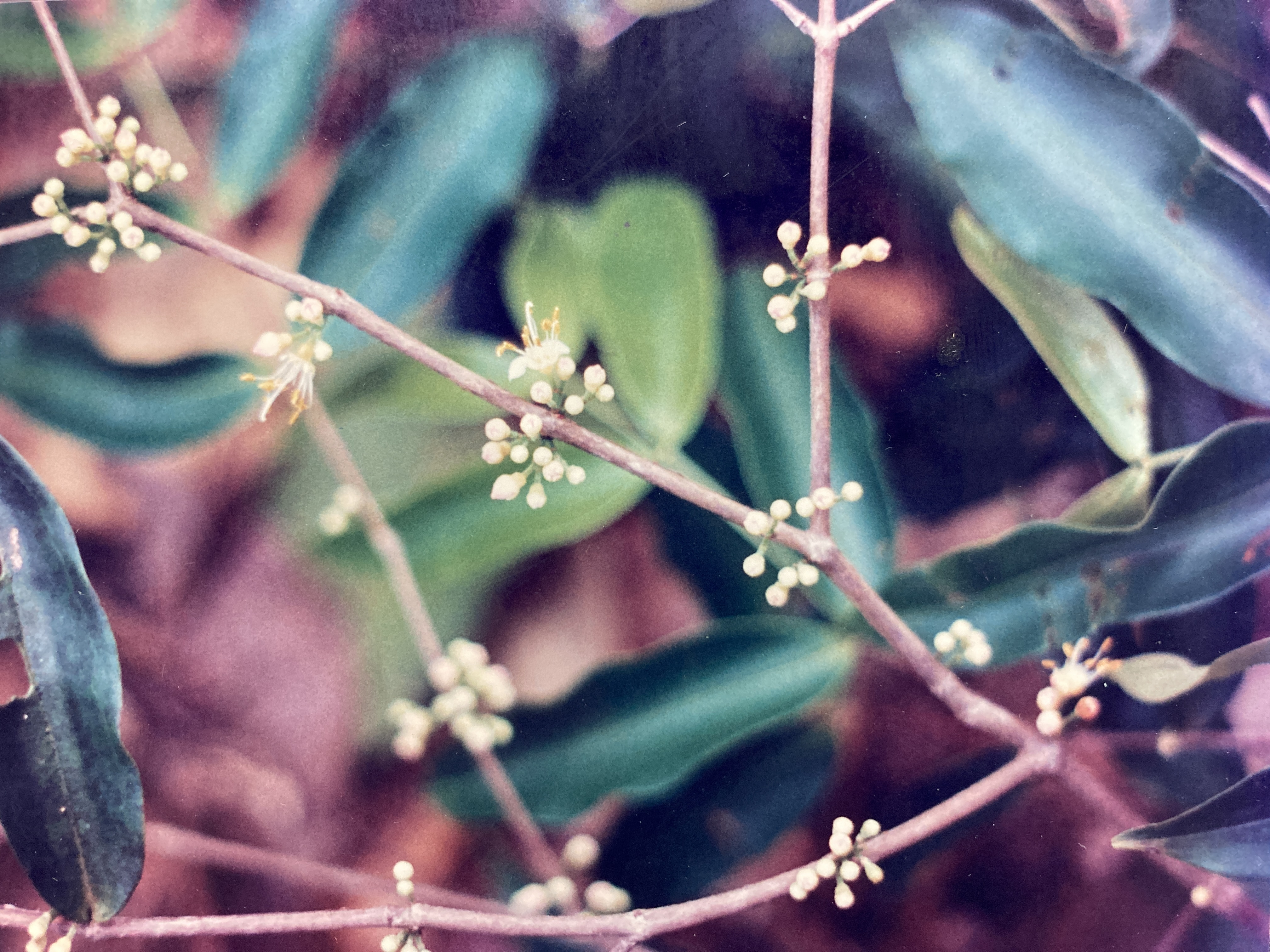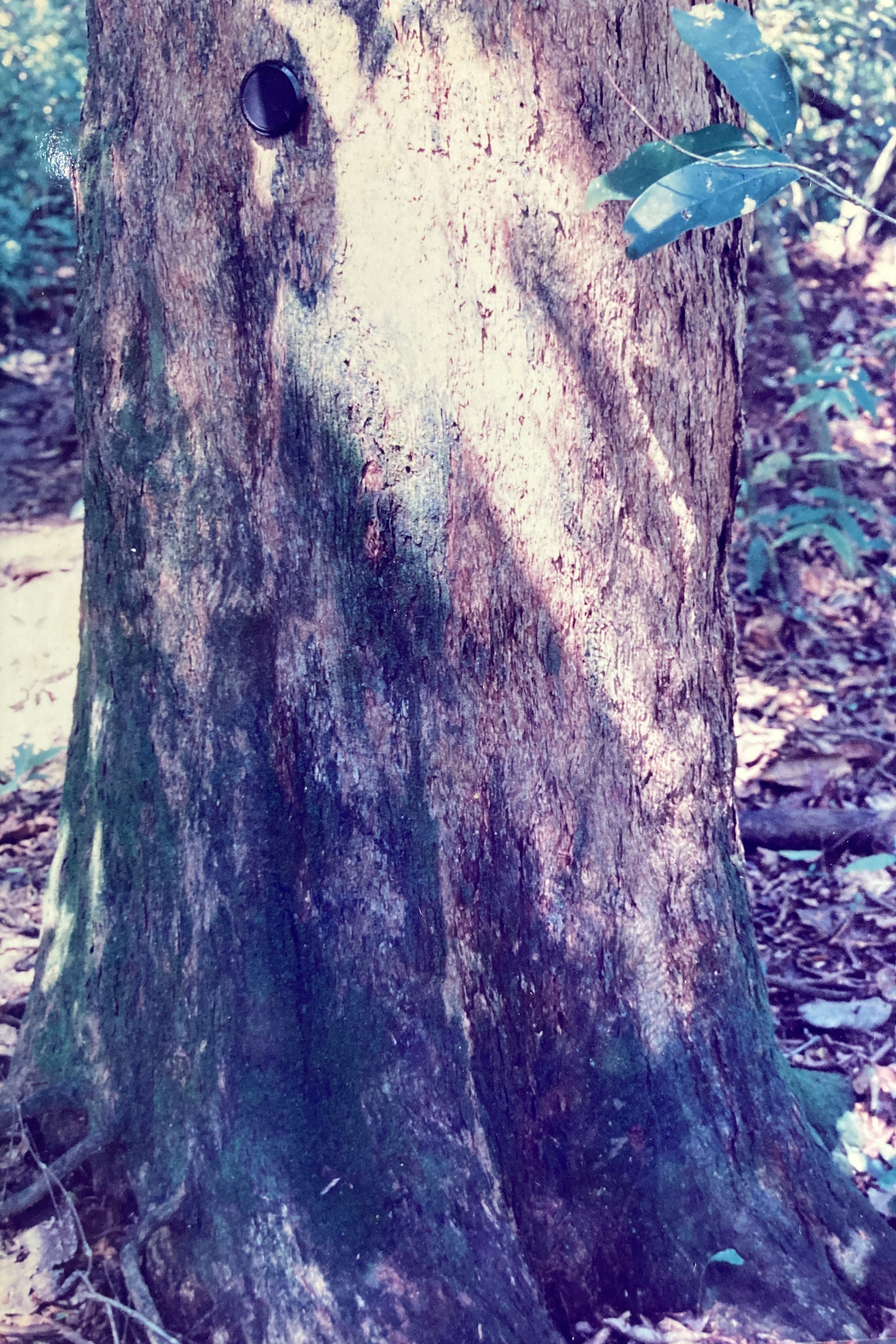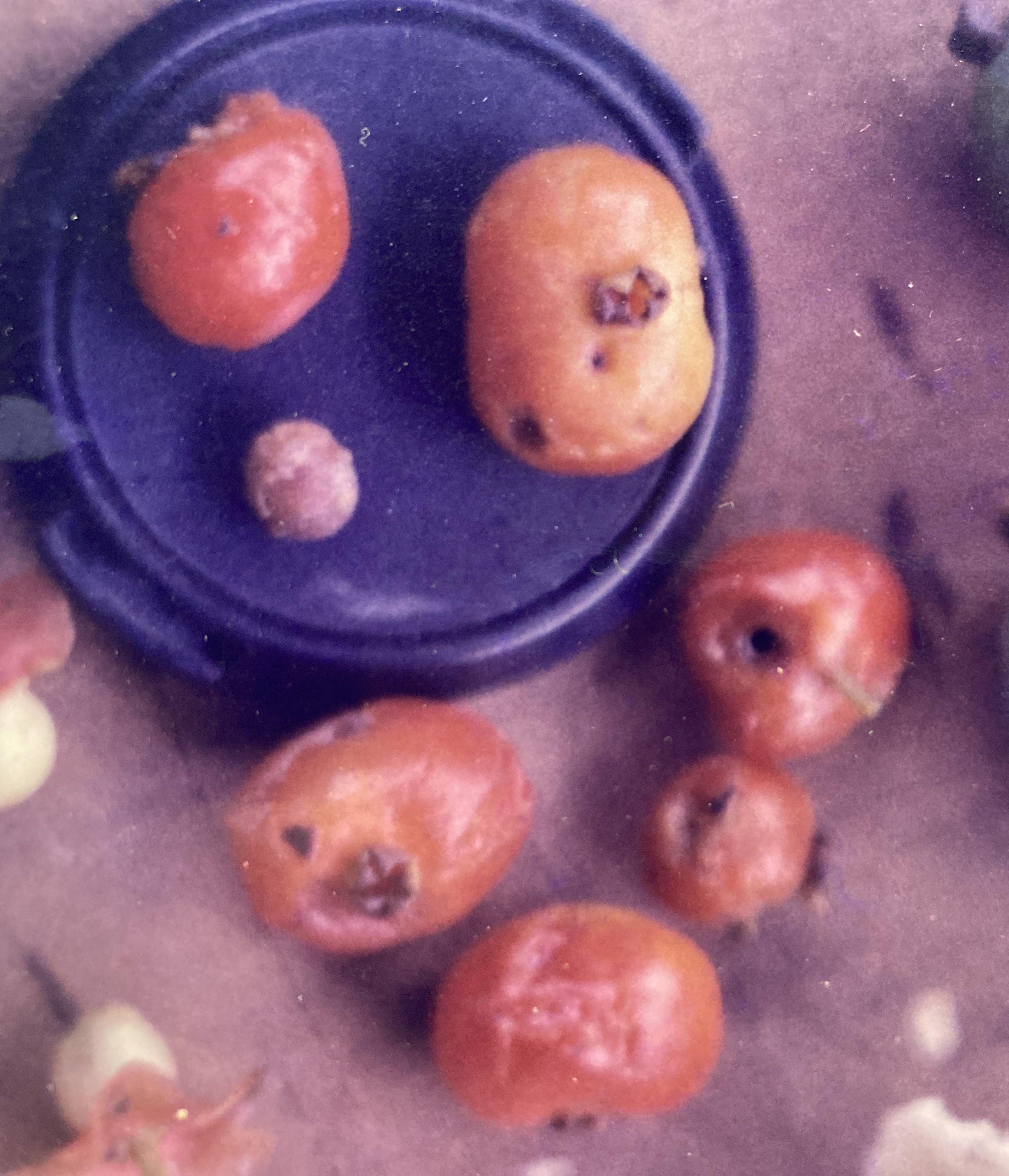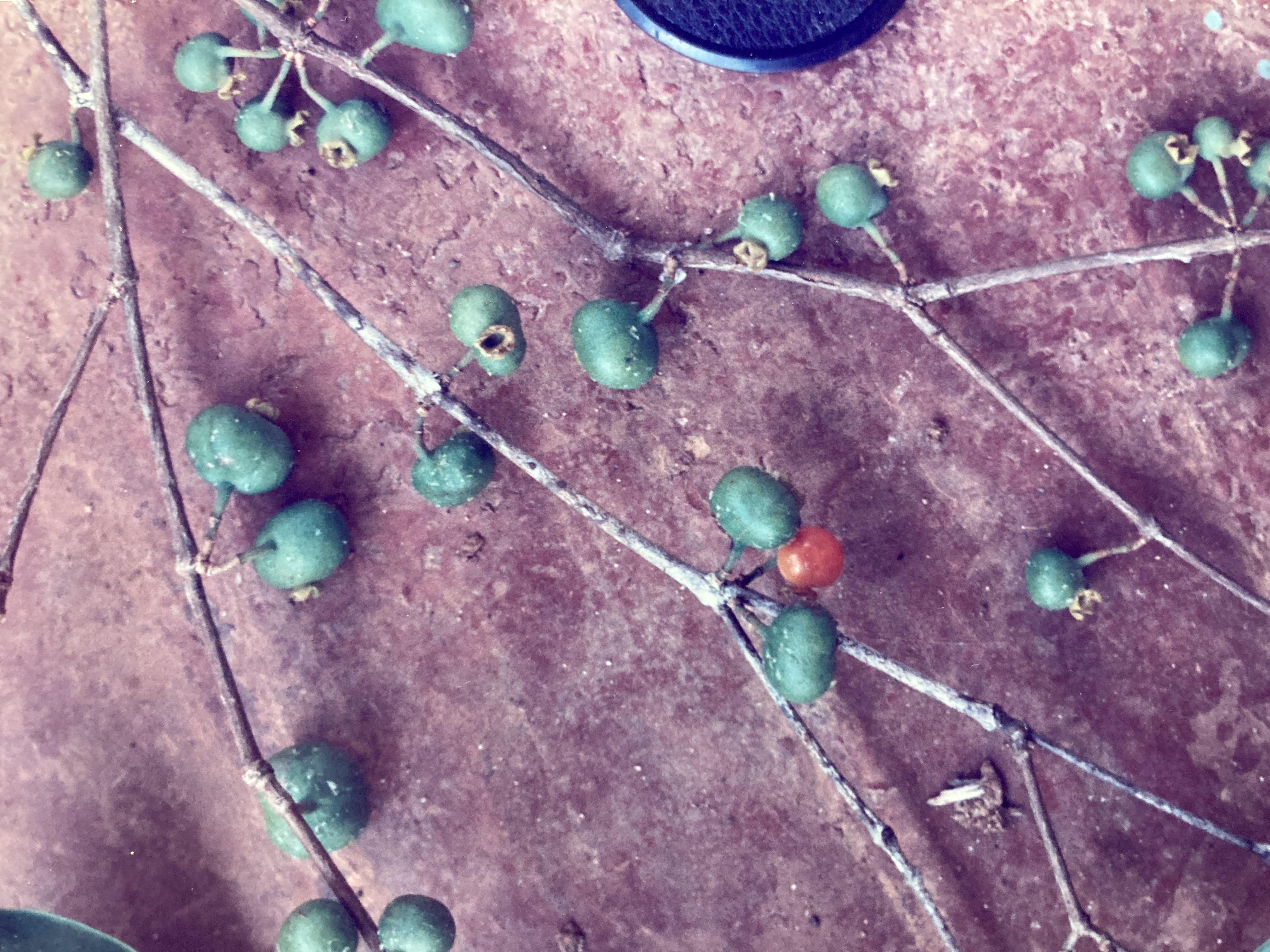Mouriri gleasoniana Standley
Melastomataceae
MANTECO
Occasional, evergreen, canopy tree (20-35 m) of limited distribution. Manteco is worthy of note because of its unusual growth habit, extremely hard wood, and rarity. This tree is a primary forest species and it is most often found growing in the well-drained soils of ridges and hill tops.
Description: The Manteco trunk (60 cm) is mostly round in cross-section, with only shallow, sinewy bulges to texture its surface. Less than columnar, these boles show a tendency to be bent and angular. The thin, papery, tan-colored bark is finely textured by hairline cracks that cut vertically and cause it to exfoliate in narrow strips. Branching occurs along the trunk at relatively low levels. All limbs extend outward in an angular, almost erratic, pattern, and sub-divide into thin, grayish, flexible twigs. Manteco foliage is generally restricted to the last 15 cm of these twigs, the bulk of the branches remaining leaf-less. Overall, the Manteco crown is very thin, open, and airy.

Leaves (11 by 3 cm) are simple, opposite, smooth, and very nearly sessile. Appearing paired, they are positioned at uniform intervals in two tiers along the twigs. Blades are narrowly elliptical in shape, with sharp apices but no drip-tips. Lacking the leaf vein pattern common to other members of the Melastomataceae family, Mouriri leaves possess one very prominent mid-rib that runs the length of the blade. New foliage is produced as the terminal portions of the twigs lengthen during the latter part of the year (from September through November). Longitudinally coiled around the mid-rib, the fresh blades unfurl, revealing a pink color and limp, rubbery texture.
Flowers (1 cm) appear in regularly spaced clusters (of about 15 blossoms each) from the old leaf scars along the bare sections of the twigs – well behind the current foliage. A star-shaped opening at the end of each golden bud allows a glimpse of the pink-edged, white petals within. Upon opening, each flower sports five, widely separated petals; ten, long, yellow-anthered stamens; and a single, white pistil. The whole structure is supported by a deep, cup-like calyx at the end of a long (1 cm) pedestal. Mouriri flowers are delicate and their petals are detached with ease. A literal rain of white, confetti-like corolla parts often fills the air underneath these trees during the peak of the flowering season. Flowering lasts from late May to early July.
Manteco fruits expand rapidly from the inferior ovaries after the flowers die. They become fleshy, irregularly shaped and lobed – though basically globular – drupes, that ripen as they turn from green to red in the trees. Distally, the stellar calyx persists, adoring each mature drupe. Fruits vary greatly in size and though they average about 2 cm in diameter, some trees consistently produce giant 4 cm orbs. From two to four, hard-coated, popcorn-shaped, dull brown seeds (0.5 cm) are found in each drupe. These germinate within a month or two of fruit fall, though seed viability in this species appears to be quite low. Harvests occur annually from November though January.
Similar Species: Two readily apparent features make Manteco a relatively easy tree to spot. First, it’s narrow, sessile, oppositely arranged leaves – an arrangement more typical of a Myrtaceae – are unique in a tree of this stature. Second, Manteco’s finely textured bark, exfoliating in narrow, thin strips when rubbed, is not seen on any other Manuel Antonio National Park (MANP) species.
Natural History: Manteco flowers are pollinated by bees and insects, while its fruits are probably eaten by small mammals and birds. Many fruits fall to the ground and rot underneath the parent tree, indicating that they are not highly regarded by the local, remnant wildlife community now present in MANP. Perhaps Mouriri‘s principle seed dispersers no longer inhabit this region.
Uses: No uses for this species are currently known. However, of all the species found in MANP – and that I have had occasion to sample anywhere in Costa Rica – this one has, by far, the hardest wood. A razor-sharp, double-edged chainsaw blade, with a rope attached to both ends and worked back and forth over a 3 cm branch, literally skipped over the top of the limb. In the end, the blade failed to bite into the wood, which proved as resistant as steel and as flexible and resilient as hickory.
Distribution: In MANP, Manteco is primarily found in well-drained soils near hilltops and along the crests of ridges. The species is also known from the Osa Peninsula. It ranges from Mexico to Panama.
Images: Trunk Flower Flower2 Flower&Leaf Fruit Fruit2 Fruit&Leaf




